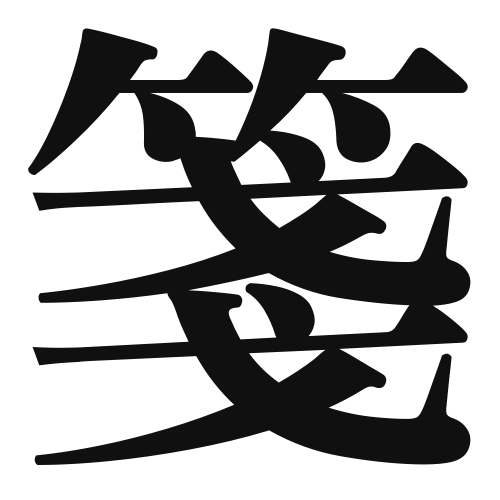1. Overview of Meaning
The kanji “箋” (sen) refers to a piece of paper, often used for writing notes or letters. It is commonly associated with stationery items like notepads or letter paper.
2. Formation and Radical
Formation of the Kanji: The kanji “箋” is a compound character (会意文字) that combines elements to convey its meaning. It consists of the radical for “bamboo” (竹) on the left, which relates to the material traditionally used for writing, and the phonetic component “sen” (千) on the right.
Radical: The radical of “箋” is 竹 (bamboo), indicating its connection to paper and writing materials.
3. Examples of Usage
Common Words and Phrases: Some frequently used words that include “箋” are:
- 便箋 (びんせん, binsen) – letter paper
- メモ箋 (めもせん, memosen) – memo pad
Example Sentences in Daily Conversation:
- 「この便箋はとてもかわいいですね。」 (This letter paper is very cute.)
- 「メモ箋に書いておいてください。」 (Please write it down on the memo pad.)
4. Synonyms and Antonyms
Similar Kanji: A similar kanji is “紙” (かみ, kami), which means “paper” in general. While “箋” specifically refers to a type of writing paper, “紙” can refer to any kind of paper.
Antonyms: An antonym could be “破” (は, ha), which means “to break” or “to tear,” representing the opposite of the intact and usable nature of “箋.”
5. Cultural and Historical Background
Connection to Japanese Culture: In Japan, writing on “箋” has a long tradition, often associated with formal communication and artistic expression, such as calligraphy.
Proverbs and Idioms: One common phrase is “箋を取る” (せんをとる, sen wo toru), which means “to take notes,” highlighting the importance of writing in Japanese culture.
